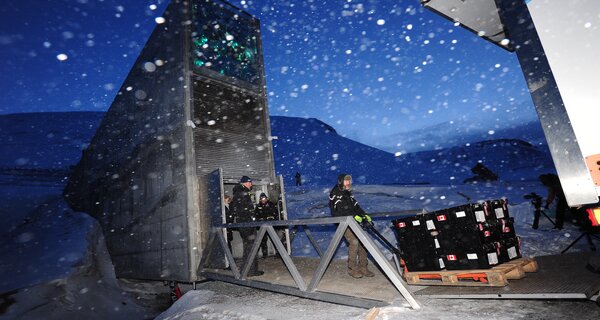Greens from Asia for the World
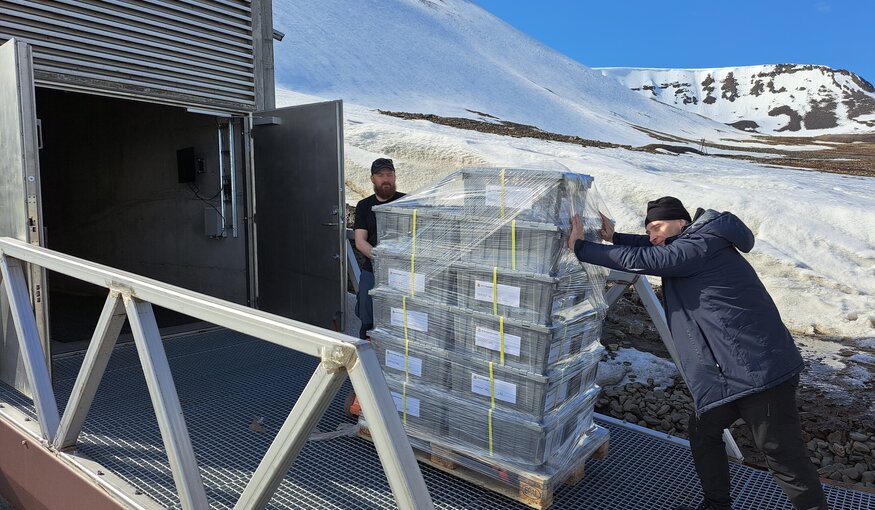
A pallet with seed boxes from World Vegetable Center on its way into the Seed Vault by Marcus Kjosnes from Pole Position Logistics and Kjell-Åke Lundblad from NordGen. (Photo: NordGen)
8 June 2023
In light of the second opening of the Svalbard Global Seed Vault in 2023 and the World Vegetable Center’s deposit, which marks its 50th anniversary, we sat down to chat with Maarten van Zonneveld, genebank manager of the world’s largest public vegetable germplasm collection.
Earlier this week, 22 boxes of nearly 8,550 samples of 178 species of vegetable, aromatic and medicinal plants sent by the World Vegetable Center were deposited on the chilly shelves of the Svalbard Global Seed Vault. We chatted to Maarten van Zonneveld, WorldVeg Genebank Manager, who was especially proud of his team for having orchestrated such a monumental deposit in time for their organization's golden jubilee.
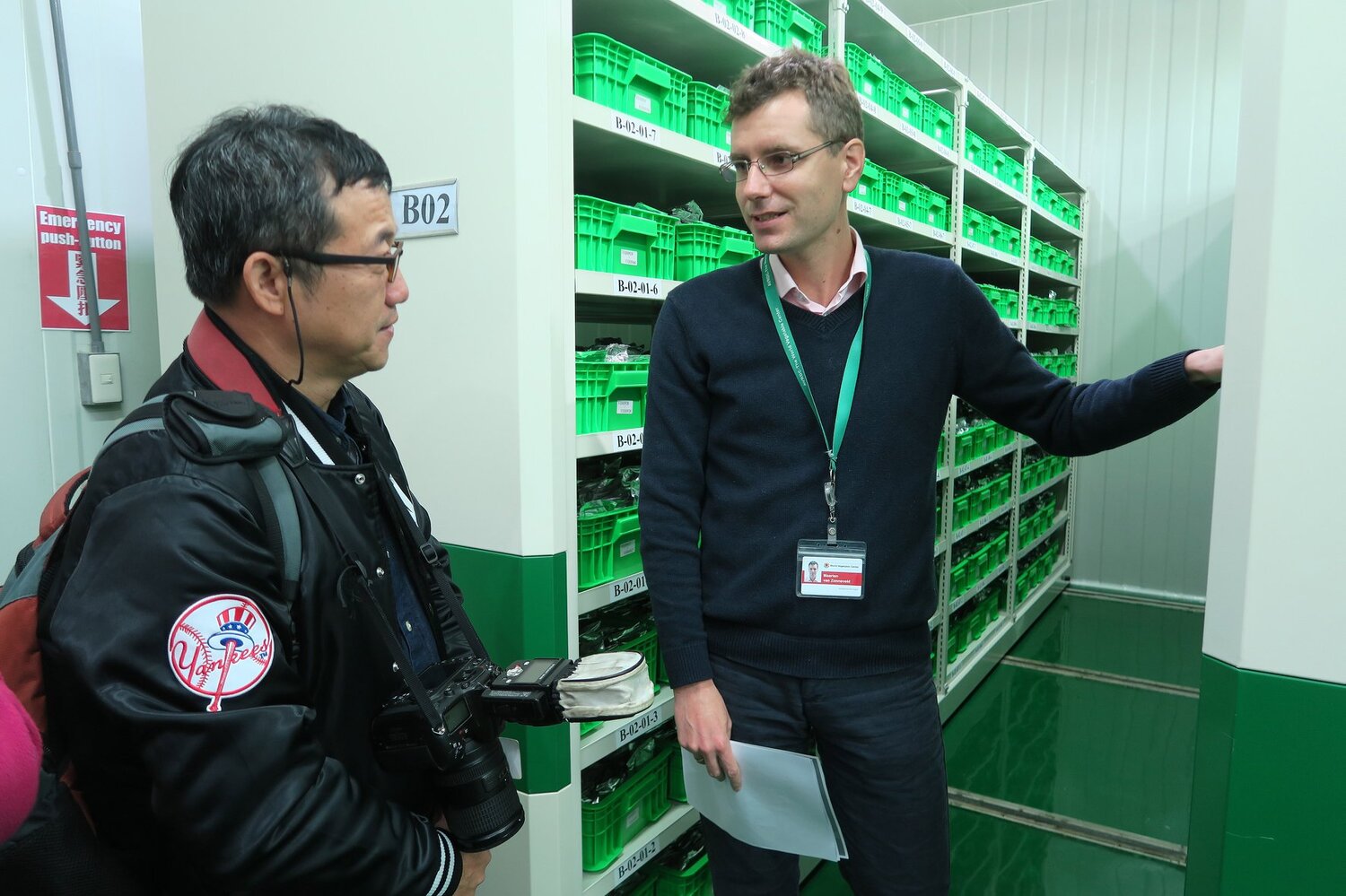
Dr. Maarten van Zonneveld, WorldVeg Genebank Manager. (Photo: Crop Trust)
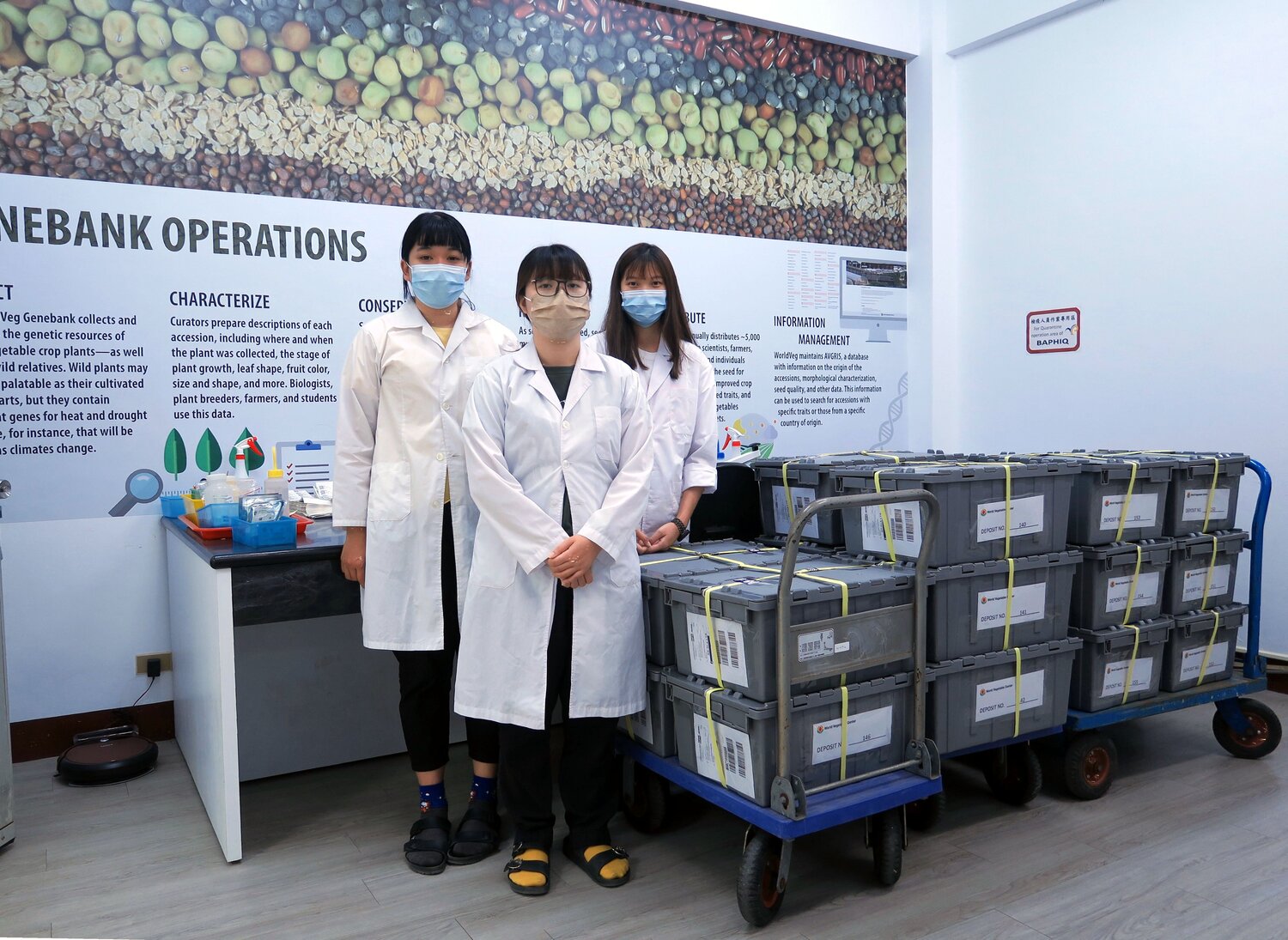
World Vegetable Center staff with the shipment prepared for Svalbard. (Photo: World Vegetable Center/Sheng-fen (Angel) Jeng)
Crop Trust: What kind of seeds do the 22 boxes contain?
Maarten van Zonneveld: Among the 178 vegetable crops included in the shipment, the top five in terms of quantity are chili peppers, tomatoes, soybeans, green gram, and black gram. We have large collections of these crops in the World Vegetable Center genebank. Other unique species include moringa (Moringa oleifera), culantro (Eryngium foetidum), celosia (Celosia argentea), and other traditional crops which can be used as vegetables, spices, and even medicinal herbs. These crops have a great potential to diversify cropping systems and make them more climate-resilient and nutrition-sensitive.
Most of the seed samples were collected in Asian countries such as Thailand, Vietnam, Malaysia, the Philippines, Indonesia, Laos, Cambodia, India, Bangladesh, and Nepal. Among them, there are many seed samples of vegetable landraces that were collected by WorldVeg and national partners as long ago as 20-30 years ago.
Over time, these seed samples may have become unique because they have been lost in the field due to changes in how land is being used and also because of crop replacement, making them incredibly valuable assets to sustain the development of new varieties and resilient food systems.

Medium term storage at the World Vegetable Center. (Photo: World Vegetable Center/Sheng-fen (Angel) Jeng)
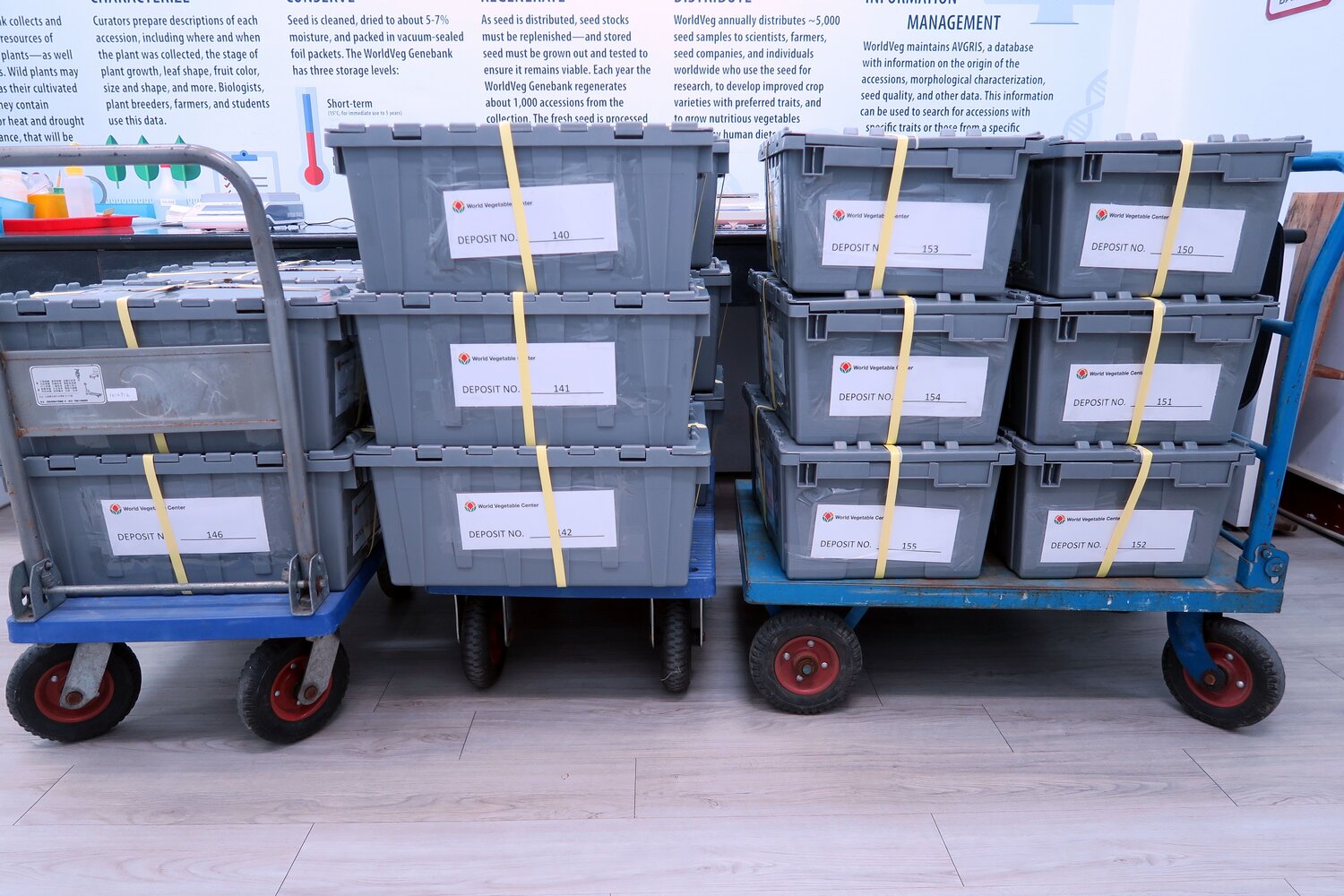
Deposits prepared for Svalbard at the WorldVeg Genebank facility. (Photo: World Vegetable Center/Sheng-fen (Angel) Jeng)
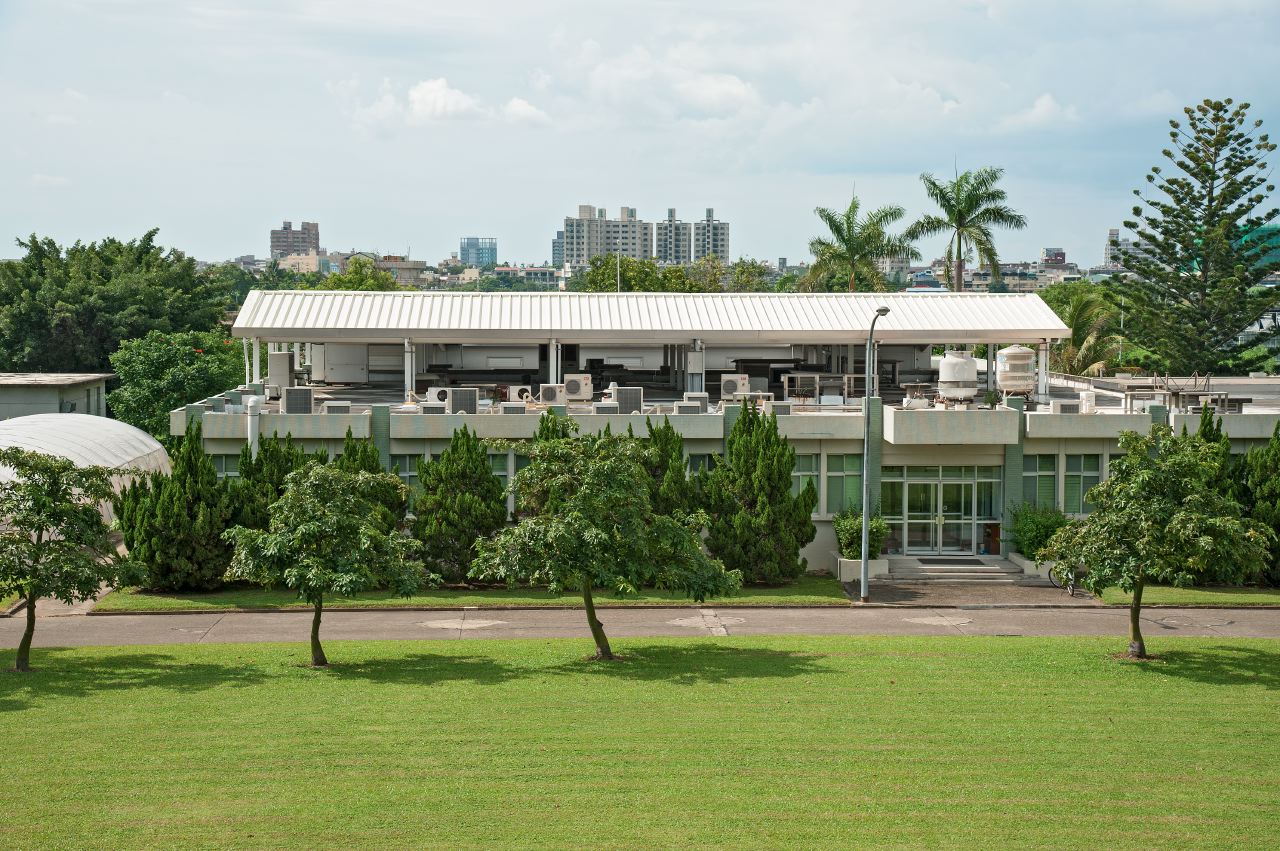
The World Vegetable Center building. (Photo: World Vegetable Center/Sheng-fen (Angel) Jeng)
Why should genebanks like yours back-up seeds in the Svalbard Global Seed Vault?
Seeds stored in genebanks still face risks, unfortunately, despite our best efforts to minimize them. War, fire, and mechanical failures that can lead to the loss of environmental control within the storage facility. Back-up storage in another, preferably far, location can go a long way to mitigate these risks.
How much of your material is already backed-up in Svalbard?
With this shipment, 75% of the samples in our genebank will be successfully backed up at the Svalbard Global Seed Vault. Our goal is to reach 100% by 2025.
Can you talk about the challenges the genebank faces in backing up its collection?
Initially, from 2008, our backup efforts were limited to the fresh seeds produced in a given year. In 2021, we initiated a systematic review of our storage and implemented large-scale preparations of seed samples and shipments for backup at the Svalbard Global Seed Vault as well as at RDA Korea. This activity is considered as a top priority for WorldVeg because the genebank is a unique asset and a critical resource for vegetable research and breeding in the tropics.
We optimized our management and workflow processes following the concepts of quality genebank management established by the Crop Trust and for which WorldVeg staff received training. This enabled our staff to prepare the seeds more efficiently. WorldVeg invested in our seed lab team, and we established standard operational procedures for information management, seed distribution, and seed conservation and safety duplication, among others. These improvements allowed us to increase the annual quantity of safety duplicates tenfold. This is quite an achievement for the whole genebank team at WorldVeg.
Why must vegetable diversity be safe and available for the long-term?
Vegetable biodiversity is under threat due to rapid urbanization, land-use change, and the homogenization of production and diets worldwide. This decline in biodiversity will limit our ability to ensure a sustainable and healthy food supply, especially in the face of the global climate crisis.
Vegetables play an important role in the diversification of cropping systems for healthy diets in a changing climate. To address this issue, WorldVeg, Crop Trust and other organizations proposed a 10-year Global Rescue Plan at the 2021 UN Food Systems Summit. With this we aim to reverse the decline in vegetable biodiversity by rescuing and safeguarding threatened vegetable varieties and their wild relatives. We want to collect, characterize, and conserve these resources, as well as provision seeds and information to breeders, researchers, and farmers.
At WorldVeg, we are proud to maintain a key global collection of vegetable diversity. Our active collection has over 70,000 seed samples, which makes it the largest international collection of vegetable germplasm in the public domain. Our main genebank holds a collection of about 65,000 accessions. Our other genebank is Tanzania and holds a unique collection of some 5,000 accessions of traditional African vegetables.
Our users – our customers you might say – include public and private breeders, researchers, and farmers. They not only have access to diversity within individual species but also to many, many different species, ranging from commercial vegetables to highly nutritious and hardy traditional vegetables whose potential still needs to be fully tapped.
Category: Svalbard Global Seed Vault

